
10-05-2020 14:58
 Andgelo Mombert
Andgelo Mombert
Bonjour à tous, Sur branche morte de Sorbus torm

04-02-2015 01:29
Mario FilippaIn October I found what seemed a corticioid fungus

07-05-2020 16:36
 Bernard CLESSE
Bernard CLESSE
Bonjour à toutes et tous,J'ai trouvé récemment

10-05-2020 17:59
 Riet van Oosten
Riet van Oosten
Hello, Found by Laurens van der Linde, May 2020,

10-05-2020 16:27
 Riet van Oosten
Riet van Oosten
Hello, Found by Laurens van der Linde, May 2020,

10-05-2020 15:12
 Andgelo Mombert
Andgelo Mombert
Bonjour à tous, Sur branche morte de Cedrus atla

08-05-2020 11:32
 Andgelo Mombert
Andgelo Mombert
Bonjour, Sur brindilles de Hedera helix (5-15 mm
Stamnaria sp 270717
Miguel Ángel Ribes,
06-09-2017 19:13
 Good evening
Good eveningGrowing on Equisetum arvense, in Bygdim lake, Norway, 1.057 m, together with Roseodiscus rhodoleucus and probably R. equisetinus. I saw "in situ" Roseodiscus, but not this Stamnaria, who grows latter, probably at home.
Macro: Cup-shape apos, white-cream to very light orange, semi-transparent, very long stipe, (1052,3) 1159,9 - 2148,4 (2149) × (317,6) 372,1 - 499,2 (521,4) µm; N = 9; Me = 1560,7 × 429,5 µm.
Asci cylindrical, 8-spores, uniseriate, with croziers, IKI+, (231) 231,2 - 245,1 (245,7) × (10,6) 10,7 - 11,5 (13,2) µm; N = 7; Me = 238,5 × 11,4 µm.
Spores broadly elipsoid, hialine, plenty of small guttules, (16,7) 17,3 - 20,3 (22,2) × (9,9) 10,5 - 12,1 (12,9) µm; Q = (1,4) 1,44 - 1,8 (2,2) ; N = 52; Me = 18,6 × 11,3 µm ; Qe = 1,6.
Ectal excipulum with textura porrecta, more prismatica near the margin, but covering with a slim layer of textura gelatinosa.
Medullar excipulum and subhymenium more or less with textura intricata.
I think the nearest species is S. urceolata, but very pale and with a very broadly elipsoid spores.
Thank you for your help.
Hans-Otto Baral,
06-09-2017 19:42

Re : Stamnaria sp 270717
Hi Miguel Angel!
superb collection, and I agree it is close to "urceolata" (which is now the true S. persoonii), but spores are too large. However - your ascus measurements are from dead asci because the width is just the same as for the spores. You did not see any turgescent asci? The spores look pretty good, i.e. they do not appear to be overmature, but in S. persoonii I saw them only 7.5-9 µm wide.
How much apothecia do you have? I am sure Danny Haelewaters would like to take a sequence.
Zotto
superb collection, and I agree it is close to "urceolata" (which is now the true S. persoonii), but spores are too large. However - your ascus measurements are from dead asci because the width is just the same as for the spores. You did not see any turgescent asci? The spores look pretty good, i.e. they do not appear to be overmature, but in S. persoonii I saw them only 7.5-9 µm wide.
How much apothecia do you have? I am sure Danny Haelewaters would like to take a sequence.
Zotto
Miguel Ángel Ribes,
06-09-2017 22:25

Re : Stamnaria sp 270717
Hi Zotto
No, none living asci, and few spores, not overmature sure.
Now the collection is dried, but I remember at least more than 30-40 apos. Give me the addres of Danny and I will sent him some sample.
Thank's a lot.
No, none living asci, and few spores, not overmature sure.
Now the collection is dried, but I remember at least more than 30-40 apos. Give me the addres of Danny and I will sent him some sample.
Thank's a lot.
Hans-Otto Baral,
07-09-2017 12:08

Re : Stamnaria sp 270717
I will send you his address by mail. Thanks! First I will ask him.
Erwin Gruber,
20-05-2020 12:44
Re : Stamnaria sp 270717
Hi Miguel Angel and Zotto,
for sure this is Stamnaria persoonii which grows on dead Equisetum fluviatile as well as E. arvense. Shape of ascomata and other presented characters of the fungi are matching well, just spore Q is relatively lower than my average measurings.
Please do not use "Stamnaria urceolata", i do not know this name had ever been published, as i told Rene his specimen represented truly S. persoonii, so his working name was a needless synonym.
Best regards, Erwin
for sure this is Stamnaria persoonii which grows on dead Equisetum fluviatile as well as E. arvense. Shape of ascomata and other presented characters of the fungi are matching well, just spore Q is relatively lower than my average measurings.
Please do not use "Stamnaria urceolata", i do not know this name had ever been published, as i told Rene his specimen represented truly S. persoonii, so his working name was a needless synonym.
Best regards, Erwin
Erwin Gruber,
20-05-2020 13:55
Re : Stamnaria sp 270717
Miguel Angel,
i got to add a minor correction to prior statements of mine: Your spore measurings leaded to greater sizes as mine, taken from types of S. persoonii and some other specimen.
Perhaps your measurings gave larger sizes as you might have squashed ascospores while measuring. I noted such alteration by pressure while measuring spores of another kind of Stamnaria. Your average spore size is about 4 µ longer and wider than i measured, so this leads to lower Q which shall be close to 2,0.
A colleage at iNaturalist forum made some notes on Stamnaria arranged from my knowledge i shared. I will share this here for common use.
i got to add a minor correction to prior statements of mine: Your spore measurings leaded to greater sizes as mine, taken from types of S. persoonii and some other specimen.
Perhaps your measurings gave larger sizes as you might have squashed ascospores while measuring. I noted such alteration by pressure while measuring spores of another kind of Stamnaria. Your average spore size is about 4 µ longer and wider than i measured, so this leads to lower Q which shall be close to 2,0.
A colleage at iNaturalist forum made some notes on Stamnaria arranged from my knowledge i shared. I will share this here for common use.
Erwin Gruber,
20-05-2020 14:42
Re : Stamnaria sp 270717
Some links to observations of Stamnaria and Horsetailes, mainly Equsetum hyemale with visible infection by the genus.
Stamnaria spp. mainly S. americana
Horsetails infected by genus Stamnaria
Indicating that S. americana and S. laetissima comb. ined. are way more frequent and widely distributed as thought, but hardly ever noticed despite presence.
Am curious how many species of Stamnaria will be proved to exist. I could gather lots of specimen from iNat users, just got no equipment for analyzing at home, and much to be done for my 1 person business in gardening.
Stamnaria spp. mainly S. americana
Horsetails infected by genus Stamnaria
Indicating that S. americana and S. laetissima comb. ined. are way more frequent and widely distributed as thought, but hardly ever noticed despite presence.
Am curious how many species of Stamnaria will be proved to exist. I could gather lots of specimen from iNat users, just got no equipment for analyzing at home, and much to be done for my 1 person business in gardening.
Hans-Otto Baral,
20-05-2020 16:30

Re : Stamnaria sp 270717
Ah, verstanden! Der erste Bericht schaut wie ein fake aus, unglaublich.
Erwin Gruber,
20-05-2020 20:09
Re : Stamnaria sp 270717
Dear Zotto, i am not sure to get the meaning of your latest comment "Der erste Bericht schaut wie ein fake aus"? Which report did you mean by that, one at iNat or something else?
Hans-Otto Baral,
20-05-2020 21:21

Re : Stamnaria sp 270717
I meant the ring-shaped growth of the apothecia.
Erwin Gruber,
20-05-2020 22:08
Re : Stamnaria sp 270717
I got it, you meant the observation of Roseodiscus subcarneus


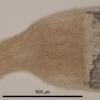
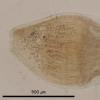
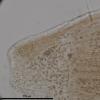
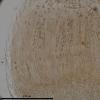
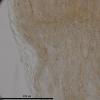
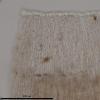

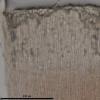
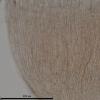
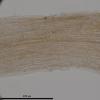
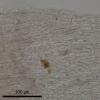

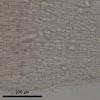
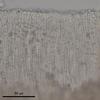
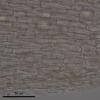

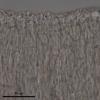
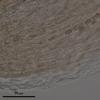

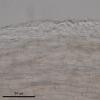
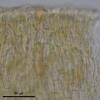
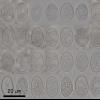
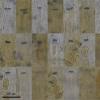

 Notes-on-Stamnaria-shared-1-0001.pdf
Notes-on-Stamnaria-shared-1-0001.pdf